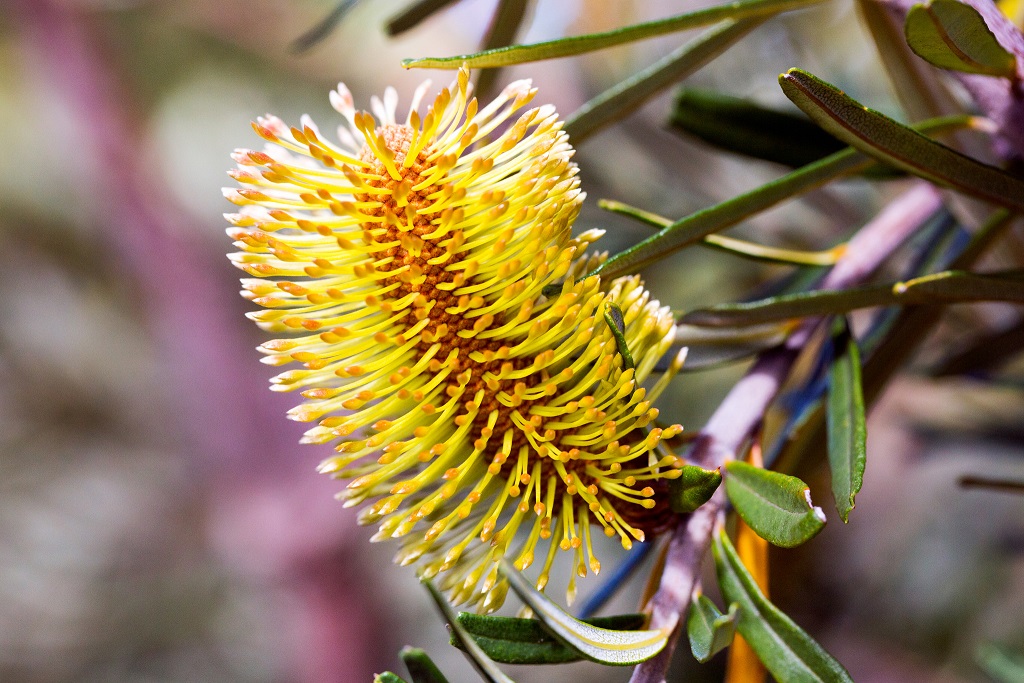
Flora of Australia, the definitive catalogue of Australia’s native plants, is the go-to source for everything floral in Australia — plant names, characteristics, and where they might be found — and now we’re taking it to the internet. Image: Flickr/CC/TassieEye
You’re a botanist, exhausted but excited. You’ve just returned home from a fieldtrip in unexplored bushland and you’re eagerly unpacking your bags looking through the baggies and folders full of potentially new species, or else plants found in locations never before observed — new samples in a blooming habitat range. How do you know if you’ve found something new? Where do you go to cross-check these new plant names?
Flora of Australia has been an invaluable resource on biodiversity for over 30 years; used by taxonomists and policy-makers alike, Flora of Australia guides everything from naming new species to informing decisions on a species’ threatened-status and priority for conservation. It’s an academic treasure.
There’s a problem, though. Well…a few of them.
First and foremost, Flora of Australia is a record of plant taxonomy (the names of plant species and their relationships to each other) printed up as a collection of volumes. Taxonomy, though, isn’t some static, unchanging field that can be captured in a book and walked away from. It’s fluid, dynamic, changing beneath our feet. Freezing the restless science of taxonomy in print is capturing the nature of a wave with a single photo.

Our knowledge of the Plant Kingdom family tree grows and ramifies each time a new study is published. Flickr/CC/Walter**
For nearly 100 years the iconic red kangaroo was in the genus Macropus (long-footed) along with the eastern grey kangaroo, also Macropus, but now it’s in Osphranter. Who would’ve thought? Names change, groups alter, new discoveries are made every day.
Taxonomy itself is a labour intensive and difficult job with the need to very accurately describe what makes new species different, so the better the (digital) tools, the better the information and therefore the better the decisions.
And it’s not just the accelerating nature of research escaping print that’s the problem. The physical collection of ‘Flora of Australia’ itself is immense. Unless you were Poison Ivy on a study break from harassing Batman, you likely wouldn’t personally own the set of over 20 books, each one a hefty tome like Encyclopaedia Britannica.
These reasons, and the inevitable wait for enough taxonomic changes to tick over to warrant another edition, explain the slow turn-around of Flora of Australia. After Volume 1’s release in 1981, researchers and a country full of botany-minded folk have had to wait up to decades for the release of each new Flora edition.
A new leaf in the Atlas of Living Australia

Already well-established online, the Atlas of Living Australia is a platform for biodiversity data, rich and robust, and a prime partner for Flora of Australia. (Kangaroo paw: would have gone better with the Macropus rufus paragraph.) Image: Flickr/CC/ron_n_beths pics
The Atlas of Living Australia (ALA) was borne from a desire to collaborate and share information freely as well as the long-standing need to unite the specimens and taxonomic data from the ‘islands’ of museums and herbaria around the country.
With the ALA’s established digital and online infrastructure, it was a matter of time before the burgeoning volumes of Flora of Australia were paired with the digital trellis of the Atlas of Living Australia to grow an online presence. Development of the digital Flora of Australia is the result of an innovative national partnership between the Australian Biological Resources Study (ABRS), Council of Heads of Australasian Herbaria (CHAH), and the Atlas of Living Australia (ALA).
The new Flora of Australia website isn’t just the digital incarnation of the books, it’s also an easy-to-use wiki of sorts. The Flora of Australia database ‘sits’ on the ALA platform, which allows taxonomists to upload their findings: new names, new species, new locations directly to the database where they’re vetted, before instantly updating the records. No need for the ten year wait.
At launch, Flora of Australia has around 14 000 profiles with information on ‘nomenclature, distribution maps, images, biodiversity data, and identification keys’. Nascent now, Flora of Australia will gradually integrate with ‘World Flora Online’, also growing to include specific data of flora from each state. The platform is flexible, built to store other poignant attributes, not just taxonomic, such as Indigenous knowledge on specific groups of flora.
Digital and widely accessible, the new Flora of Australia, online, is finally in the medium as fluid and fast-paced as the science it catalogues, and we’re proud to be a part of its history.


Pingback: Flora of Australia launch – Atlas of Living Australia
Pingback: Petals to pixels: the prestigious leaves of Flora of Australia turn digital – CSIROscope | Plant Health Solutions